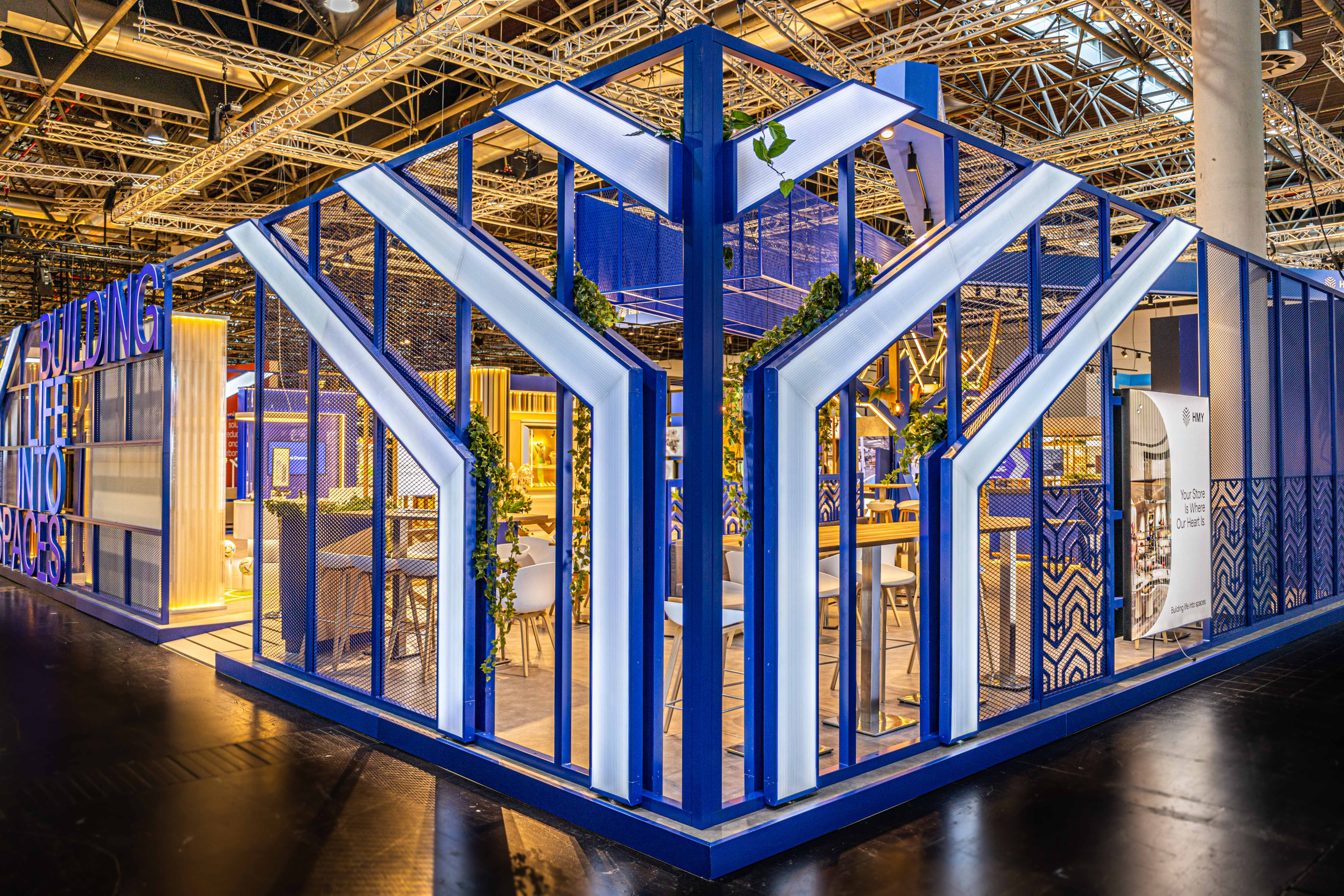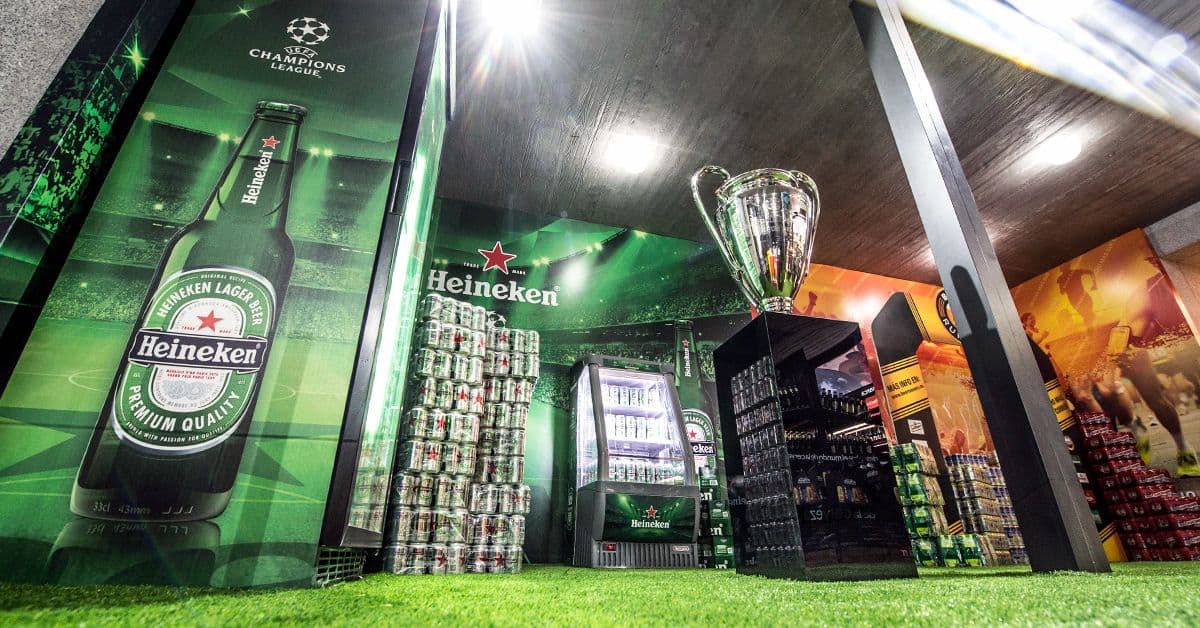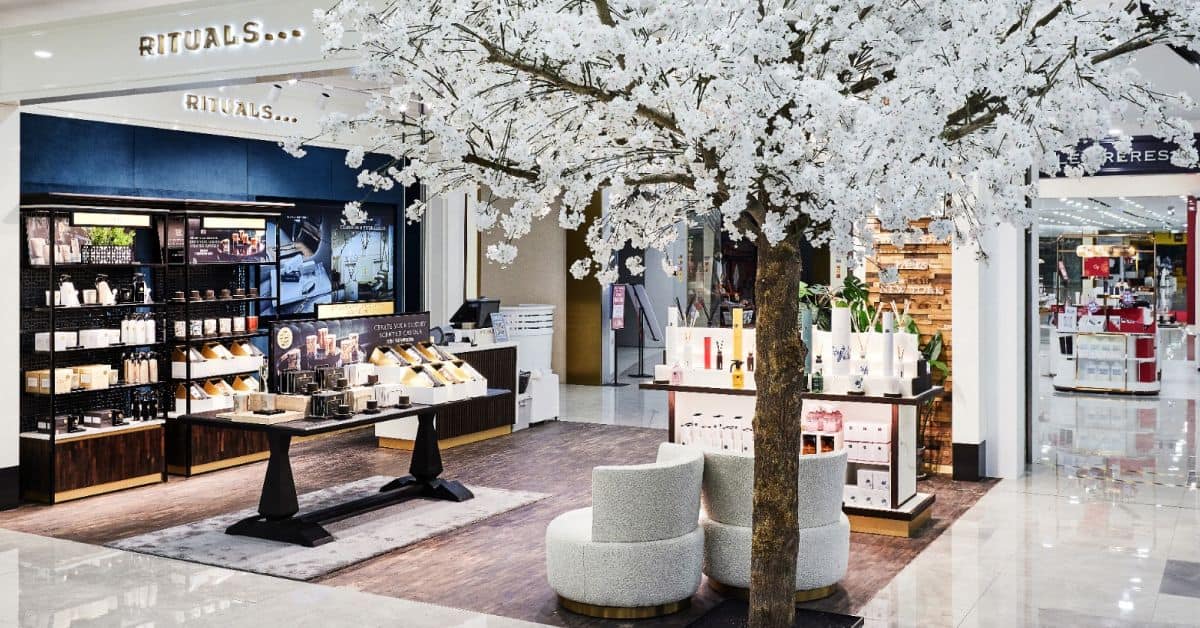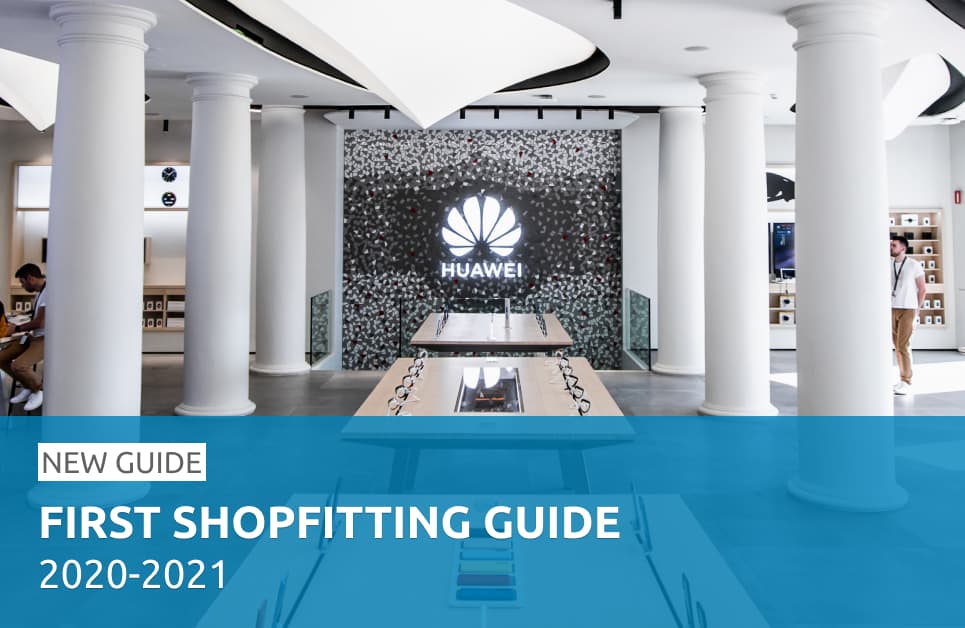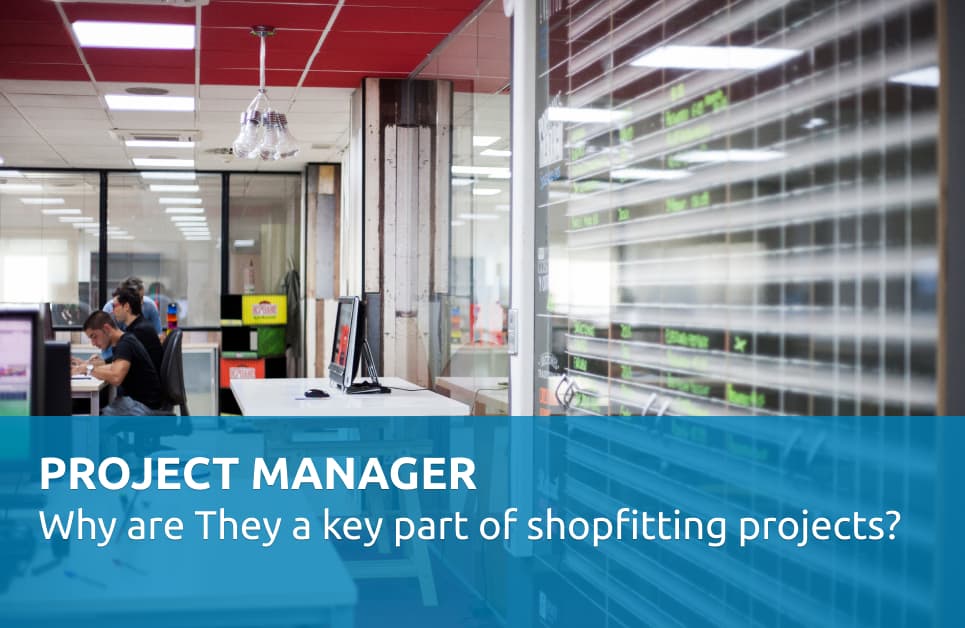Tag: shopfitting
Key elements for expanding retail and point-of-sale formats
- Which retail formats should be considered in an expansion strategy?
- How does each point of sale format respond to the business objectives of a brand or retailer?
In recent years, brands and retailers have fostered huge professionalisation in their expansion and marketing departments use of physical points of sale.
This professionalisation has led them to use stores not only as sales tools but also as systems in a more complex and complete brand strategy. A change that has given rise to the birth of new formats of commercial spaces and the reinvention of the existing ones.
Opportunities that previously had the sole objective of ‘selling’ now play much more complex roles and seek additional benefits that position the brand and build long term customer loyalty.
Therefore, decisions regarding the location, design, complexity, quality of materials, technologies, or importance of new points of sale are guided by the business objective pursued within the company’s global strategy.
Some of these may be:
- Analysis of business opportunities in new local markets.
- Brand expansion.
- Brand positioning.
- Customer loyalty.
- Extending the commercial network to new geographies within a specified period.
- Etc.
What are the advantages for big brands in opening mega stores or flagships? What is more profitable for a brand, a shop-in-shop, or a corner? What role can pop-up stores play in your brand strategy?
The guide ‘Key elements for expanding retail and point-of-sale formats’ reflects on the expansion strategies that brands and retailers are currently using. You will find the keys to understanding what role each type of commercial space can play in the expansion projects of companies dedicated to large-scale consumption.
A document that will help guide decisions on how much, how, where, and when to invest in creating new points of sale for your brand or improving existing ones.
- Flagship stores. One of the main trends in retail today.
- The common concept stores that we are used to. What role do they play in omnichannel retail?
- Corners or shop-in-shops. Formats with a lot of potential beyond the sale.
- Displays and stands. A way to highlight your brand…or even other sales channels.
- Pop-up stores. Are they a suitable format if your brand already has its stores?
Find out all the keys in this guide!
We present the first Shopfitting Guide, the professionalisation of the sector
- We present the first document that compiles the methodology of retail expansion projects.
- This guide combines our 60 year experience in creating retail spaces and manufacturing commercial equipment for all sectors.
- Introduces the trends that will dominate retail in 2021.
From retail, for retail
2020 has been a year full of events, new events and even events that have disappeared as we knew them. After everything we have been through, not only should we look ahead and move forward, but we also need to reflect.
As a result, at HMY we have been thinking over the last few months about how to better serve our customers and develop solutions to protect them, but also about the status of the retail sector.
Our first conclusion is that, despite being one of the most complex sectors, the one that integrates the most disciplines and professions (engineers, trades, craftsmen and designers, project and logistics coordinators, marketing, sales and assistance experts, etc.), retail is highly fragmented in terms of its approach.
There are no homogeneous criteria regarding brands’ and retailers’ expansion projects. As a result, each company integrates its own strategies managed by different profiles and teams, such as the procurement, marketing, expansion, trade or merchandising departments.
Any of these approaches is correct, as retail is an essential part of the strategy of companies, which responds to different objectives from time to time. There is probably no single pathway to success, as long as that path follows a strategy and methodology inherent to retail projects.
A methodology that until now was ‘unwritten’.
It is only recently that business schools have begun to incorporate degrees and majors in shopfitting projects. Therefore, our second reflection this year is focused on training. Should methodologies be created? Do we need to generate and share the ‘Best Practices’ of this sector, which is often stagnant and fragmented?
This is why we have created the first Shopfitting Guide. This guide seeks to convey our experience of over 60 years, turning companies’ retail projects into a reality, sharing our knowledge and everything we have learned thanks to our clients.
This guide includes:
- Our approach to retail in 2020-2021.
- A reflection on the status of the retail sector and the opportunity it faces to transform society.
- The phases included in a 360º shopfitting project, both to carry out complete expansion projects and to improve current commercial equipment.
- An overview of all the trades involved in the creation of commercial equipment for a retail point of sale.
- The cross-sector elements that must be present in a retail expansion project.
- The trends that will dominate retail in 2021.
We hope you find this guide useful, so that, based on your own approach and on the guide, you can build projects that involve a change not only in the retail sector, but also in society.
Download the new Shopfitting guide
Download the new Shopfitting guide
Why are Project Managers a key part of shopfitting projects?
- Project Managers play an essential role in ensuring the smooth development of retail projects. They anticipate problems and coordinate the different stages of the project.
- The greater the complexity of the retail project, the greater the need for a role that defines and supervises the best work methodology.
What are Project Managers?
Project Managers are a key figure in shopfitting and retail expansion projects. They are responsible for controlling the information and making sure the project is carried out as efficiently as possible.
Their tasks include:
- Analysing and defining the costs of the whole project.
- Anticipating and minimising setbacks.
- Coordinating all the stages of the project.
Project Managers are so important in all sectors that one of the most renowned certifications in the business world is the PMP (Project Management Professional) awarded by the Project Management Institute. The extremely high quality standards of this international institution are practically considered as an MBA for those who receive this certification.
Almost all sectors entrust Project Managers with their projects, from IT companies to public bodies. Of course, this process includes the subject we are dealing with: shopfitting projects.
At HMY, we consider this certification as an industry standard. This is why our Project Managers hold this certification, or work according to the methodology of the Project Management Institute.
“In many cases, Project Managers become the Brand Custodians, the reference to the brand within the organisation and the ones in charge of guaranteeing the service and quality level of the deployment processes in each country.
In international roll-outs, the figure of the Global Project Manager is essential when building the local teams that can give support in each country to the Branch Offices of the brands in the local language, thus increasing the success rate”.
David Proietti, Global Project Manager at HMY
Do you know all the stages and disciplines involved in a comprehensive shopfitting project? At HMY, we have prepared the 1st 360º Shopfitting Guide for you.
Which role do Project Managers play in shopfitting projects?

The work methodology of retail projects, where the number of stages, disciplines and interlocutors can be decisive, has been developed around the figure of Project Managers.
If Project Managers did not assume the coordination and control of projects, those responsible for each stage and trade would need to manage coordination tasks that would take them away from their main work and, therefore, affecting productivity.
This would cause an increase in errors and delays that give rise to unaffordable costs in each project, also bearing in mind that the more complex the project is, the greater the probability of making these mistakes.
Some clients or suppliers may have developed shopfitting projects (or even still do so) without including the role of Project Managers, as they may consider it is not that important. Nevertheless, in most of these cases this will be because they have probably worked with a similar figure: Quantity Surveyors This role is focused on technical knowledge. Over time, Quantity Surveyors mastered the methodologies of project management, thus turning into Project Managers.
To sum up, these are the tasks corresponding to Project Managers, and the stages where they take part in retail projects:
- Analysing the tender from the brand or retailer [LINK a infografía de Factores para la elección de un proveedor de Shopfitting], and helping the commercial team gather the necessary information to be awarded the project.
- Being familiar with the company and its network of partners and suppliers.
- Being experts in the sector they work in, knowing what the competition does and how they carry out their shopfitting projects to learn and improve.
- Preparing a time and cost planning. This planning is included in the tender.
- Creating the necessary communication structure for the project information to correctly reach the departments involved on time.
- Selecting and monitoring external collaborators or developers if the project requires.
- Making sure all departments comply with the planning and helping solve issues that may arise during the project.
- Anticipating the logistical and assembly deployment, ensuring all those involved in the process hold the required work, transportation and installation permits.
- Controlling live performance.
- Preparing a final report on the project and the following stages.
“In an international deployment such as Yamaha’s, the figure of Project Managers is key to ensure the project completed on time, with quality, and on budget. Furthermore, Project Managers are in charge of planning with the team and centralising with the brand the monthly evolution of the roll-out, optimising production to reduce stock and logistics costs”.
David Proietti, Yamaha Project Manager at HMY
Establishing a work methodology in retail projects
As explained, the main responsibility of Project Managers in the retail sector is to establish the most appropriate work methodology to develop the shopfitting project and act as a coordinator and controller.
This expertise is made up of two key aspects:
- Being a great project management professional.
- Having a thorough understanding of the retail sector, the stages that make up expansion projects and the trades involved in the process.
In order to help readers in this regard, at least with the second aspect, we have prepared this first 360º Shopfitting Guide, which you can download here for free.
Key factors to choose a shopfitting supplier
- How to choose the best shopfitting supplier for your project?
- We analyse the areas and factors on which major brands, multinational brands and retailers base their decisions to choose a shopfitting supplier.
All projects begin with a brief defining the objectives of the project, the audience or buyer whom the project is addressed to, the strategy, etc.
The great challenge of the brief is to generate a clear explanation, ensuring that shopfitting suppliers understand the project and to provide them with enough information to meet the level of service and quality that is sought.
In other words, when we go from the brief to the tender of the shopfitting project.
How are tenders usually organised?
The most common structure of retail project tenders is as follows:
- Presentation of the company, the brand, its objectives and its consumers.
- Breakdown of tender or objectives.
- Key factors shopfitting suppliers must deal with.
- Planning and deployment proposal.
- Other requirements to be met by the chosen shopfitting supplier.
- Pricelist.
The presentation of the company and the breakdown of objectives are defined by the client, while the planning and deployment proposal is essential for each project, and varies from one supplier to another. There is no one correct way to organise a deployment. Moreover, different options can be found to meet the objectives.
It is from the third point onwards where suppliers must show their full potential in a tender, as explained below in detail:
Key factors to choose retail suppliers
Most commercial equipment manufacturing companies can prepare a plan or present a price proposal, but not all of them can respond to the factors that determine whether a supplier is in line with the approach of the brand or retailer and if their services can cover all needs.
Key factors to be considered when choosing a retail supplier
- Industry expertise
How is the bidder organised technically and geographically? What project management methodology do they follow? Can their Project Managers coordinate international expansion projects and control the entire project, or do they have limitations? What management successes and certifications have they achieved?
- Industrial capacity
What disciplines and materials does the supplier master? What is their capacity to scale up production? Multi-material capacities and average production time play a significant role in this regard. As we do at HMY, suppliers should offer clients a single point of contact, regardless of whether the commercial equipment includes different materials and electrifications. Furthermore, being able to swiftly scale the manufacturing process of these elements is a great added value in expansion projects.
- Quality: Methodology and Certifications
Brands and retailers should establish guidelines for minimum criteria for the finalist suppliers. However, suppliers should be able to guarantee their quality levels live up to expectations. At this point, brands and retailers usually set criteria such as maximum tolerances in the gaps between parts of the same element, and require certain tests to be carried out to check whether materials are resistant to corrosion and discolouration over time and to contact with objects and chemicals.
- Project and Supplier Sustainability
Today, sustainability is essential in almost all tenders. In this regard, shopfitting suppliers must offer guarantees that the project will meet the requirements of current consumers. What is the origin of the materials? Are the designs and engineering processes eco-friendly? What is the impact of logistics on the project as a whole? Are the inks and paints used by the supplier eco-friendly? In line with our SmartEco project and the principles of eco-friendly design, at HMY we use Fujifilm-certified eco-friendly inks and water-based paints, limiting VOCs such as ketones, benzenes or formaldehydes.
- Value Engineering
One of the aspects brands and retailers value the most, and that most shows the expertise of the supplier, is knowing what improvements they can make to furniture designs and technology in terms of materials, production process, savings, packaging, etc. Brands are expected to provide the visual guide, and suppliers to provide the technical guide.
- Scalability
How will suppliers organise their production and logistics for projects to grow in line with the needs of brands and retailers? Many tenders are pilot projects where clients assess the overall capability suppliers before entrusting them with the full deployment of the project.
- Agility and Versatility of the Elements
The more comprehensive the client’s retail expansion strategy is, the more point of sale formats the tender includes. From flagships to shop-in-shops, through pop-up stores. Suppliers must prove they can act with as much autonomy as possible when adapting clients’ designs to these formats while sticking to the essence of the brand and adapting the budget to the said formats.
- Logistics and International Installation Capacity
Suppliers must prove their management strategy centralises resources and establishes action will be carried out with a deep local knowledge of each area where the brand will operate. Glocality is the key concept big brands are looking for. A good installation is key for success in the last mile. Installers should have received previous training regarding the client’s concept.
As explained, many factors must be taken into account when choosing a shopfitting supplier to make sure your retail business meets the objectives set efficiently and sustainably.
































